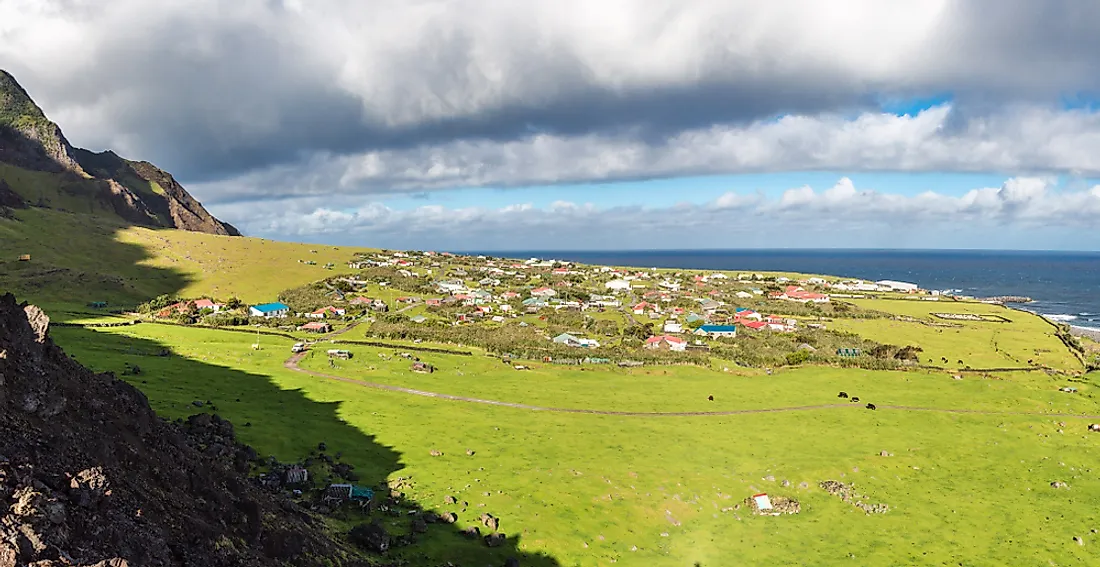Where Is Tristan da Cunha?

Tristan da Cunha is both a group of islands in the South Atlantic Ocean and the largest island of that group. Located 1,511 miles from Cape Town, South Africa, 2,165 miles from the Falklands Islands, and 1,344 miles from the island Saint Helena, Tristan da Cunha is considered the most remote inhabited chain of islands in the world.
The archipelago, which is volcanic in origin, consists of the inhabited main island of Tristan da Cunha, the uninhabited island of Nightingale, and the wildlife sanctuaries of Gough Island and Inaccessible Island. The main island has an estimated population of 250 permanent residents, all of whom have British Overseas Territories citizenship. The weather station on Gough Island is staffed by personnel, but they are not considered permanent residents. Tristan da Cunha, along with the islands of Saint Helena and Ascension, form the British Overseas Territory of Saint Helena, Ascension and Tristan da Cunha. The archipelago contains no airstrip and is accessible only by boat or helicopter.
History
Portuguese explorer Tristão da Cunha discovered the chains of islands in 1506, naming them Ilha de Tristão da Cunha, but failed to land on the islands due to rough seas. On February 7, 1643, the crew of a ship from the Dutch East India Company made a stopover on the island, and the entire archipelago was later surveyed by French explorers in 1767. However, Tristan da Cunha's first permanent settler was American whaler Jonathan Lambert in 1810, who named the the archipelago the Islands of Refreshment. The United Kingdom claimed the islands in August 1816 and made them a dependency of the Cape Colony. In October 1875, Tristan da Cunha was declared a dependency of the British crown. In the early 20th century, the British government offered to evacuate island residents in response to years of challenges, but the local population refused. A series of eruptions in 1961 forced the island's population to be relocated to Cape Town until they were able to return in 1963.
Government
As part of a British Overseas Territory, the Queen of the United Kingdom is the executive authority of Tristan da Cunha. As a result, there are no political parties or trade unions on the island. The Queen is represented by the Governor of Saint Helena, who then appoints an Administrator to act as the head of government in Tristan da Cunha. The islands have some legislative autonomy, but the laws of Saint Helena are applied as long as they do not conflict with local legislation.
Economy
Tristan da Cunha has a unique economic and social structure in which land is communally owned and all families engage in farming. Outsiders cannot settle or buy land on the islands. In addition to agriculture, the other sectors of the economy are government and commercial fishing. Major exports include rock lobster, fish, and the sale of postage stamps and coins. As part of a British Overseas Territory, Tristan da Cunha is not a member of the European Union (EU), but is part of the European Union's Overseas Countries and Territories Association (OCTA). The remoteness of the islands makes travel to and from the outside world very challenging. The islands are accessible only by boat or helicopter, and there are no mobile phone networks. However, a satellite phone connection does exist, as well as a single internet cafe with publicly accessible internet.











